What Surgeons can Learn from Pilots
Members-only Session at the Global Spine Congress Dubai
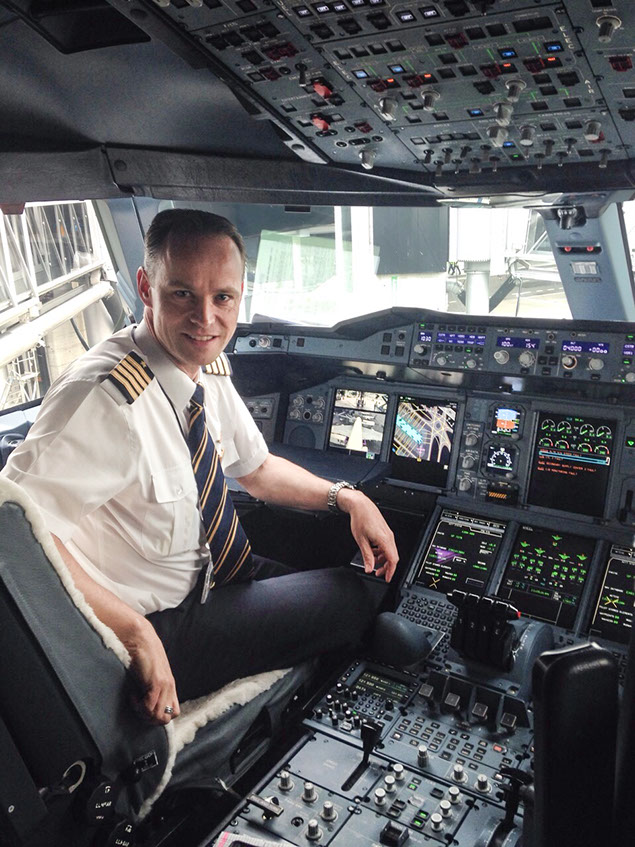
A380 Training Captain Mark Roth
Airplane disasters make for dramatic headlines. There is often a great loss of life, followed by a very thorough inquiry by governments and organizations. As a result, the airline industry has developed an amazing culture of safety and quality improvement, converting the lessons learned from incidents and accidents into improved procedures and practices.
During the Global Spine Congress in Dubai, Mark Roth, an A380 Training Captain, shared his views and insights taken from his vast experience in the airline industry as an instructor, coach, and researcher. He outlined which of the well-tried aviation methods can be transferred to surgery to make the surgical workplace more effective and ultimately safer.
There are many reasons to believe that certain aviation lessons should transfer easily: pilots and surgeons tend to be highly skilled, Type-A personalities, who rely heavily on technology to do their jobs. They both work in a “real-time” environment under high physiological and psychological pressure, in jobs that involve hours of routine punctuated by moments of extremely high stress, involving decisions about life and death. Ultimately, safety is the goal that both industries have in common.
A pilot’s training, however, differs considerably from a surgeon’s training. According to Roth, there are four main pillars in aviation industry, which are crucial to today's safety standards and could be transferred to medicine:
• Critical Incident Reporting system
• Checklists
• Crew Resource Management (CRM)
• Simulators
Critical Incident Reporting System: changing a “blaming” culture into a “learning” culture
The aviation industry learned its real lessons from disasters, and changed its culture in response. According to Professor Helmreich, one of the leading academics in aviation human factors, CRM, and culture in aviation, the definition of an error in health care is more vague than in aviation. In aviation, it is easier to identify a terrible mistake and who was responsible for making it. Aviation has much more of a blame-free culture in the case of reporting and owning up to safety incidents. Also, fear of litigation and losing licenses helps to hinder the honest reporting of medical mistakes, whereas aviators may be inoculated against punishment if they promptly report incidents to the authorities.
Changing the culture of an organization or even industry is very difficult and a major challenge. To date, in medicine, it's usually the patient safety organizations that push safety initiatives forward, rather than the surgeons or the industry themselves.
Checklists—setting the priorities right
In the airline industry, pilots fall back on checklists over and over. The checklist is a crucial component, not just under normal circumstances and for standard procedures, but also for emergency and time-critical scenarios. This isn't the route medicine has traveled when dealing with complicated, demanding situations.
According to James Reason, Professor of Psychology at University of Manchester and author of the bestselling book "Human Error," disasters have a way of building up. According to his "Swiss cheese model," when things go wrong, it is usually because a sequence of failures conspires to produce the ultimate disaster. Reason observed that disasters do not simply occur, they evolve. In complex systems, a single failure rarely leads to harm.
In the airline industry, different checklists have been developed: for normal, abnormal to emergency, highly time-critical, and safety-at-risk incidents.
Apart from the WHO Surgical Safety Checklist, which was first published in 2008 in order to increase the safety of patients undergoing surgery, there is still a lack of standardized protocols and specific standard operating procedures with clear instructions.
But checklists are only reminders of the most critical and important steps—the ones that even the most highly skilled professional could miss. In order to fulfill their role to increase safety, these lists must fulfill a number of criteria: they must be correct, reliable, resilient, practical, and above all acceptable to the user community.
Despite checklists and the latest technologies being built into planes, pilots still need to possess the skills to manually fly and handle a plane. Checklists cannot replace basic flying skills, and setting initial priorities correctly in abnormal or emergency situations should follow these golden rules: 1, Fly. 2, Navigate. 3, Communicate.
It is still of utmost importance for pilots to have the situational awareness to identify all the factors that lined up to make a simple incident end in a catastrophe. Airbus has taken this into account in its Airbus in Safety First, December 2015 publication, by stating the following: “Checklists should still be used but they should be used for guidance and not treated as if they are the Holy Grail. No checklist can cover all check situations.”
Crew Resource Management (CRM)
Often, we blame “the system” for causing errors, but errors can happen even in ideal circumstances. From the 1960-80s, as technology rapidly improved and the aircraft became more reliable, more accidents occurring were attributed to “pilot error.” With information from Flight Data and Voice Recorders, it became apparent that many deadly accidents were not caused by aircraft malfunction or failure in aircraft handling skills, but by human failure in managing complications.
The disaster that served as a "wake-up call" to aviation was when two 747s collided on the runway at the airport on the Spanish island of Tenerife in 1977, killing 583 people. Fog contributed to the crash, but so did miscommunication between the pilots. The captain of one flight thought that he had clearance for takeoff, and the black-box recording showed miscommunication with his first officer, who was apparently too intimidated to correct him.
The tragedy prompted the aviation industry to address how pilots communicate in the cockpit, using "Crew Resource Management," a management system tool that is designed to make optimum use of all available resources and equipment, procedures, and people to promote safety. CRM includes all crew members on the plane, and enables them to observe and speak up. For instance, junior crew members are able to directly address potential problems with the captain, and therefore improve collaborative decision-making. Surveys in operating theaters have confirmed that pilots and doctors have similar common interpersonal problem areas and similarities in their professional culture with very different seniority levels. For example, on an Airbus A380, with as many as 30 crew members, and with roles ranging from cleaning and service staff to the captain, there is the need for communication across all gradients of seniority. In addition, the staff members’ functions are not only to cater the needs of up to 650 passengers on board, but to also observe what is going on outside of the 73m long plane, eg, during de-icing in winter. Today, CRM is mandatory in the airline industry and all pilots have to attend regular courses.
Simulators—regular training of emergencies
Practice doesn't make perfect; it's the perfect practice that makes perfect. In aviation, pilot experience is recognized to be invaluable. Yet, since pilots rarely experience serious plane malfunctions anymore, their experience is insufficient. They are therefore required to undergo two- times a year several training days in simulators, and if they don't pass their simulator check, they may lose their license.
In surgery, the approach is still that one goes with the knowledge, expertise and instinct that he or she has developed over time. However, there is a culture change in progress, and the latest surgical education innovations include working on simulators, such as the Bioskills Simulator course that will be staged for the first time during the Davos Courses 2016.
The transfer of procedures—in a different way
Roth concludes that many aviation safety ideas, from simulation training to standardized working environments, have the potential to help patients. However, the health care realities are different from aviation and the industry has to find its own way. Patients are far more complex than airplanes, there are emotions involved, and surgery isn't a matter of delivering a well maintained machine that supposedly acts the exact same way every time it is used to travel from place A to place B. As a matter of fact, medicine is probably more complex than just about any other field of human endeavor.
Roth added that medicine and surgery are subject to rapid changes and constant improvement of technical innovations, whereas the complexities of regulatory requirements make innovation in aviation a slow process. It often takes years until new technologies are certified to be built into commercial aircrafts. Last but not least, he says, it is also in the pilot's interest to make aviation safe, since they have the same interest in landing safely as their passengers do.
*Mark Roth, born 1968, started his aviation career in 1988. He currently works as Airbus A380 Training Captain and has a flying experience of about 16’000 hours on different aircraft and helicopter types as well as about 2’500 hours in simulators. He has an MSc in Air Safety Management from the City University London and dedicates a large part of his time to researching human factors, to lecturing and to leadership coaching. He has worked extensively on various projects with air traffic control and in simulators. Mark is a Swiss citizen, married and has three young adult children.
- Download WHO Surgical Safety Checklist
-
Suggested books:
- Atul Gawande: The Checklist Manifesto – How to get things right
- James Reason: Human Error
- Robert L. Helmreich and Ashleigh C. Merritt: Culture at Work in Aviation and Medicine
- Suzanne Gordon, Patrick Mendenhall, Bonnie Blair O'Connor: Beyond the Checklist – What Else Healthcare Can Learn from Aviation in Teamwork and Safety
- Don Harris: Human Performance on Flight Deck
Scoli-Risk-1 study wins the Whitecloud Award for the second year in a row
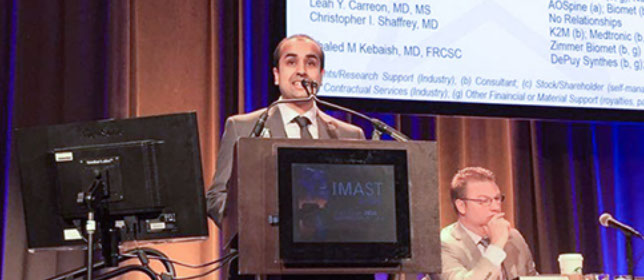
Whitecloud Awards: Dr. Amit Jain is presenting the award-winning abstract
An AOSpine Knowledge Forum Deformity study sponsored by AOSpine-SRS wins top award at the IMAST conference.
The Scoli-Risk-1 study was designed to evaluate neurologic complications associated with surgical correction of “high risk” complex adult spinal deformity. This prospective, observational, multicenter study marks the first clinical trial collaboration between AOSpine and the Scoliosis Research Society (SRS). The study was executed by AO Clinical Investigation and Documentation (AOCID) on behalf of AOSpine and the SRS. The data are currently being analyzed.
At the recent International Meeting on Advanced Spinal Techniques (IMAST) held in Washington, D.C., from July 13–16, 2016, a paper based on the Scoli-Risk-1 study was awarded the prestigious Thomas E. Whitecloud Award for Best Clinical Paper. The study used the Scoli-Risk 1 dataset to investigate the incidence of proximal junction kyphosis (PJK) in adult spinal deformity patients fused to the pelvis, and compared the PJK rates in patients with long (upper instrumented vertebra (UIV) at or cranial to T8) vs. short (UIV caudal to T8) constructs.
Presenter of the abstract, Dr. Amit Jain, and the senior author of the study, Dr. Khaled Kebaish were thrilled to have won the Whitecloud award. Dr. Amit Jain declared, "This was a multicenter collaborative effort. This wouldn't have been possible without the cooperation of the Scoli-Risk investigators, support staff, and everyone who's been involved."
The Scoli-Risk-1 study's success comes as no surprise. This is the second year in a row it has been awarded the Whitecloud award - Best Clinical Paper at the 22nd IMAST meeting 2015. It has also been acknowledged at other meetings where it was the winner of the Best Paper Award at the Global Spine Congress 2015, and won the Russell A. Hibbs award for the best Clinical Research Paper at the SRS 48th Annual Meeting & Courses 2013.
You can read the winning abstract from the meeting below.
Our congratulations go to Drs. Jain and Kebaish and the large team of people from around the world who are involved in this successful study.
The abstract of the winning presentation:
Incidence of Proximal Junctional Kyphosis in Patients with Adult Spinal Deformity Fused to the Pelvis: A ScoliRisk-1 Subanalysis
Amit Jain, MD; Floreana Naef Kebaish, MD; Lawrence G. Lenke, MD; Yong Qiu, MD; Yukihiro Matsuyama, MD, PhD; Christopher P. Ames, MD; Michael G. Fehlings, MD, PhD, FRCSC; Benny T. Dahl, MD, PhD; Hossein Mehdian, MD; Kenneth MC Cheung, MD; Frank J. Schwab, MD; Ferran Pellisé, MD; Leah Yacat Carreon, MD, MSc; Christopher I. Shaffrey, MD; Khaled M. Kebaish, MD, FRCSC
Summary
The aim was to investigate the incidence of proximal junction kyphosis (PJK) in adult spinal deformity patients fused to the pelvis, and to compare PJK rates in patients with long (UIV at or cranial to T8) vs. short (UIV caudal to T8) constructs. The overall incidence of PJK in our study was 23.7%, with 9.6% patients requiring revision for PJK. Further, there was no significant difference in PJK rate in long vs. short fusion constructs anchored at the pelvis.
Hypothesis
In adult spinal deformity (ASD) patients fused to the pelvis, the incidence of proximal junctional kyphosis (PJK) would be significantly higher in short vs. long fusion constructs.
Design
Secondary analysis of a prospective cohort
Introduction
The aim of our study was to investigate the incidence of PJK in ASD patients fused to the pelvis, and to compare PJK rates in patients with long (defined as upper instrumented vertebrae “UIV” at or cranial to T8) vs. short (UIV caudal to T8) fusion constructs.
Methods
198 (73% of 272) patients who had long or short fusions anchored to the pelvis were identified from the AOSpine-SRS ScoliRisk-1 prospective study. At 2 years, 148 (75%) patients had radiographic and 159 (80%) patients had clinical follow-up. Patients who required revision surgery for PJK were classified as having “symptomatic PJK.” Patients who had a change from postoperative to a follow-up radiograph of >10° in kyphosis between the UIV and two levels above, but did not require revision were classified as “radiographic PJK.”
Results
Over the 2-year follow-up, PJK was noted in 47 of 198 (23.7%) patients. Of all patients, 19 (9.6%) underwent a revision surgery for PJK. Of 133 patients who did not undergo revision for PJK and had follow-up radiographic data available, 28 (21.1%) had radiographic evidence of PJK. The long vs. short fusion groups did not differ significantly with respect to rates of overall PJK (23.5% vs. 24.1%, P=0.933), symptomatic PJK (6.7% vs. 13.9%, P=0.092) or radiographic PJK (25.3% vs. 14.8%, P=0.145). Comparing health related quality of life outcomes in patients with radiographic PJK and those without PJK, there were no significant differences in: SF-36 physical component summary (P=0.986 and P=0.714), SF-36 mental component summary
(P=0.705 and P=0.952), and SRS-22r total scores (P=0.993 and P=0.322) at baseline or at the 2-year follow-up, respectively.
Conclusion
The overall incidence of PJK in severe ASD patients with fusion to the pelvis was 23.7% with 9.6% undergoing revision. There was no increased rate of PJK or revision for PJK in long vs. short fusion constructs anchored at the pelvis.
Riluzole in Acute Spinal Cord Injury - RISCIS
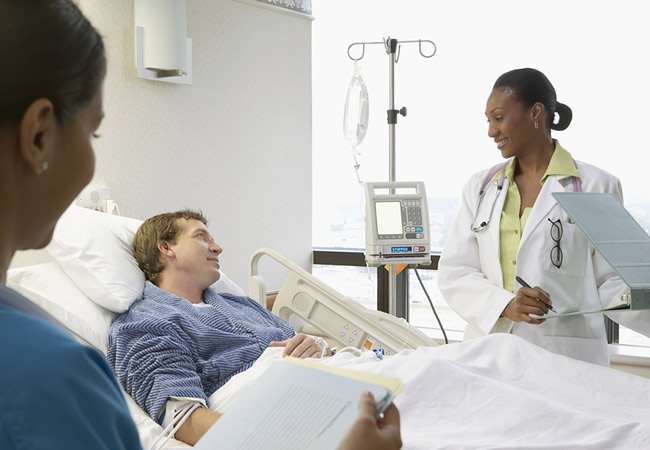
…
A Multi-Center, Randomized, Placebo Controlled, Double-Blinded Trial of Efficacy and Safety
Spinal cord injury (SCI) results in devastating physical impairment and is associated with significant costs to the individual and to society. There is compelling evidence that the pathobiology of SCI involves an initial primary mechanical injury which is amplified by a complex series of secondary injury events including ischemia, ion channel dysfunction, glutamatergic excitoxicity and apoptosis. Riluzole, a sodium-glutamate antagonist, which is approved as a treatment to attenuate the rate of nerve cell degeneration in amyotrophic lateral sclerosis (ALS), has shown considerable promise as a therapeutic strategy to enhance outcomes in preclinical models of traumatic and non-traumatic SCI. A few years ago, AOSpine North America, led by principal investigator Dr. Michael Fehlings (chair of the AOSpine SCI Knowledge Forum and past chair of AOSpine North America) set out to obtain clinical evidence on the safety and efficacy of the drug riluzole in improving outcomes after spinal cord injury (SCI) in patients. Further proof supporting its safety when delivered to patients immediately following injury had been obtained in a U.S. Department of Defense-funded phase I/IIa clinical trial (undertaken by the North American Clinical Trials Network-NACTN, in partnership with AOSpine) between 2010 and 2011 in which many AOSpine North America members participated as investigators. This Phase I/IIa prospective, cohort-controlled study also showed promising proof-of-concept data suggesting potential neuroprotective efficacy particularly after cervical SCI.
AOSpine North America’s multi-center trial was initiated in 2013 under the abbreviated title “Riluzole in Acute Spinal Cord Injury Study: RISCIS”. Since then, the trial has grown to include 22 sites across the United States, Canada and southeastern Australia. There are plans in motion to further expand the trial to additional North American sites and other regions in Australia. Spine clinician-scientists from Europe, Asia and the Middle East have also voiced their interest in joining this collaborative international research effort.
The RISCIS trial is now a combined project supported by the following entities: AOSpine North America, AOSpine International, Christopher and Dana Reeve Foundation’s North American Clinical Trial Network (NACTN), Ontario Neurotrauma Foundation, U.S. Department of Defense and Rick Hansen Institute. In recognition of the potential significant impact that RISCIS may have on SCI treatment, the participating sites and principal investigators have all agreed to subsidize many of their internal costs in order to be able to participate in the study. Their willingness to contribute their own time and funds has technically made this a study with more than 25 sponsoring organizations.
Many of the sites have taken this opportunity to initiate SCI sub-studies. These include efforts to research: MRI biomarkers in SCI, the pharmacokinetic properties of the study drug and quality assurance comparisons for patients presenting with SCI to two separate hospitals in the same health system. As of today, RISCIS has enrolled 51 subjects.
As indicated by RISCIS principal investigator Dr. Michael Fehlings (Professor of Neurosurgery at the University of Toronto), the RISCIS trial shows “considerable promise to enhance the neurological outcomes and quality of life and reduce the costs of care for individuals with acute SCI”.
AOSpine International, AOSpine North America and its collaborating partners would like to take this opportunity to thank all of the investigators, study coordinators and AO members for their continued efforts in promoting world-class SCI research through their participation in the RISCIS trial. For more information about the trial, please email RISCIS@nor-consult.com.
We look forward to bringing the AO community further updates about the trial as they become available.
The Knowledge Forum SCI
The Knowledge Forum SCI is one of the five pathology focused working groups acting on behalf of AOSpine. Chaired by Dr. Michael Fehlings, this group of international experts consists of Dr. Robert Grossman, Dr. Shekar Kurpad, Dr. James Harrop, Dr. Bizhan Aarabi and Dr. Brian Kwon. In addition to this flagship project, this group of key opinion leaders is also interested in two other areas: a) the development of evidence-based clinical guidelines for the treatment of acute spinal cord injury; b) an overall description of the SCI patient population through the extensive sample size provided from the merge of two databases (NACTN – The Christopher and Diana Reeve Foundation's North American Clinical Trials Network – PI: Robert Grossman; and STASCIS – The Surgical Trial in Acute Spinal Cord Injury Study – PI: Michael Fehlings).
AOSpine Mentorship Education Scheme Launched in New York City!
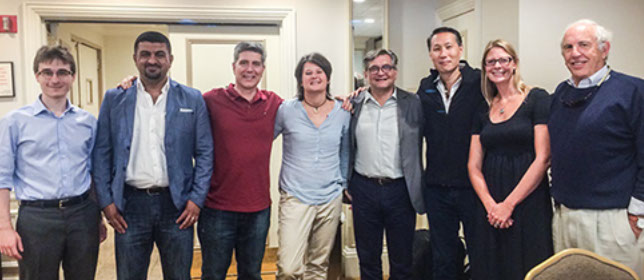
The first ever AOSpine mentees and mentors together with AOSpine staff and eductor who conducted the meeting. Left to right: Luigi Nasto, Ghazwan Hasan, Alexander Vaccaro, Carolin Melcher, Roger Härtl, Jeffrey Wang, Kate Quagliozzi, Joseph Green.
AOSpine Mentorship Education Scheme Launched in New York City!
The AOSpine Mentorship Education Scheme held its first face to face meeting with the inaugural Mentor and Mentee pairs on the 27th – 28th August, in New York City. The essence of the scheme is to provide younger spinal surgeons with an experienced and well respected Mentor. After much research into various schemes AOSpine decided that the mentees would be allowed to choose their own Mentors, and as such the meeting was held in the USA as all three Mentors were based in this country.
Mentee Luigi Nasto choose Jeffrey Wang from UCLA, Carolin Melcher choose Roger Härtl from Weill Cornell and Ghazwan Hassan choose Alexander Vaccaro from Thomas Jefferson University Hospital.
The meeting started with an open discussion about what they saw as success in this scheme. As the meeting progressed each pair created their own individual program and came away with a tailor made 'Personal Development Plan'. The mentors were provided with teaching tools and food for thought when considering their role in the scheme.
Close relationships were created and strong bonds started for the future.
AOSpine International wishes all three pairs the best of luck as they embark on their journeys.
Involving our valued Past Fellows in our future
…
Following a successful meeting at the Global Spine Congress in Dubai this past spring AOSpine is pleased to announce future opportunities for our Past Fellows from all regions.
During the Global Spine Congress in Milan next May a special paper session will be held for those Past Fellows who have their abstracts accepted by the Scientific Committee. Depending on the number of abstracts a poster session might also be included to showcase the works of our Past Fellows.
As with this year's GSC a social gathering will be included specifically for Past Fellows where they can meet to discuss their experiences, network with key opinion leaders from our organization and enjoy food and drinks with their peers. Past Fellow Eko Subagio from Indonesia said about the dinner at the GSC: "The atmosphere was great and very friendly. I very much appreciated the invitation to the event."
AOSpine Fellowships have been successfully running for many years now. We hope by holding special sessions for these surgeons and researchers, and encouraging them to become a more active part of our organization we will nurture their potential and help them on their chosen paths.

AOSpine goes green—Opt-in for Global Spine Journal Hard Copy and download your Membership Certificate online
…
As part of AOSpine's "GO Green Strategy", AOSpine is committed to avoid printing documents wherever possible, and instead provide electronic documents for download.
As a result, all AOSpine members are able to download their membership certificates directly from their online profile as of immediate effect. This easy and flexible option will not only help to reduce paper significantly, but also the carbon footprint as thousands of parcels will no longer need to be shipped to members around the world.
After conducting a survey amongst our members many of them stated that they would not mind receiving the Global Spine Journal electronically via e-mail for download. Each member now has the choice to receive the Global Spine Journal in either electronic or printed version. If you wish to continue to receive the printed copy please opt-in for the printed version in your AOSpine Membership profile before Dec 31, 2016.
We are delighted to be able to contribute to a more environmentally friendly process and thank you for your continuous support!
Access your AOSpine Membership profile now!
Winners of the 8th European Young Researcher Award 2016
24 applicants from 11 countries applied for the award. AOSpine would like to thank all participants for their contributions and congratulates the winners for their outstanding work:
1. Derya Burcu Hazer Rosberg, Turkey.
Title of Paper:
Antimicrobial Effect of Polymer-Based Silver Nanoparticle Coated Pedicle Screws: Experimental Research on Biofilm Inhibition in Rabbits
2. Pauline Colombier, France.
Title of paper:
TGF-β1 and GDF5 Act Synergistically to Drive the Differentiation of Human Adipose Stromal Cells toward Nucleus Pulposus-like Cells
3. Martin Stienen, Switzerland.
Title of paper:
Validity and Reliability of a Measurement of Objective Functional Impairment in Lumbar Degenerative Disc Disease: The Timed Up and Go (TUG) Test.
4. Serge Marbacher, Switzerland.
Title of paper:
Patient-Rated Outcomes of Lumbar Fusion in Patients With Degenerative Disease of the Lumbar Spine
5. Zhen Li, Switzerland
Title of paper:
Development of an ex vivo cavity model to study repair strategies
in loaded intervertebral discs
The aim of the award is to encourage and motivate young Europe-based researchers in the field of spinal care. The award winners were selected by the AOSpine Europe Research Committee, based on a predefined set of criteria, including the relevance of the research question, its clinical impact and novelty value, the study design, the results and their interpretation, including a short description on how the awarded grant will be used.
The awards are the following:
First place:
- 10'000.00 Swiss Francs
- Invitation to present during an AOSpine event
- Public announcement of the award
- Free AOSpine membership for one year
Second place:
- 3'000.00 Swiss Francs
- Free AOSpine membership for one year
Third place:
- 2'000.00 Swiss Francs
- Free AOSpine membership for one year
Fourth & Fifth place:
- Free AOSpine membership for one year
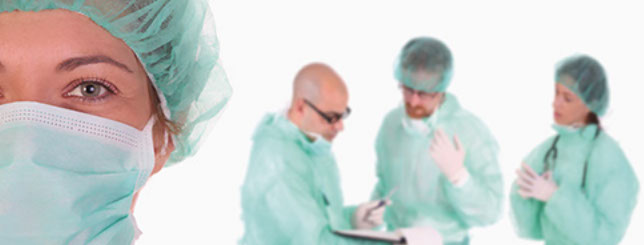
Medical Device World
Share for better patient care!
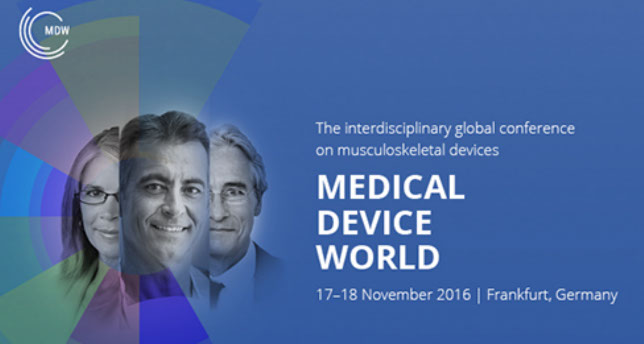
MEDICAL DEVICE WORLD—an AO Foundation initiative—scheduled November 17–18, 2016 in Frankfurt/Germany, is a one-of-a-kind interdisciplinary global conference for all stakeholders involved in the development and use of musculoskeletal devices. Share your clinical expertise in an interdisciplinary exchange with regulators, manufacturers and other experts to foster knowledge transfer in support of the AO vision of excellence in the surgical treatment of trauma and musculoskeletal disorders and its mission of achieving more effective patient care!
Get a 360° view of—and fuel the discussion on a wide range of hot topics to be addressed by MEDICAL DEVICE WORLD top speakers, including
- Michael Suk, MD, Orthopedic Surgery, Geisinger Health System, US
- Michael Drummond, Centre for Health Economics, University of York, UK
- John Wilkinson, Medicines & Health products Regulatory Agency, UK
- John Brennan, Eucomed, BE
Be inspired by our program and speakers: www.medicaldevice.world. Registration is open!
MEDICAL DEVICE WORLD - Join us and share for better patient care!
An initiative of the AO Foundation.
Newsletter 8 September 2016